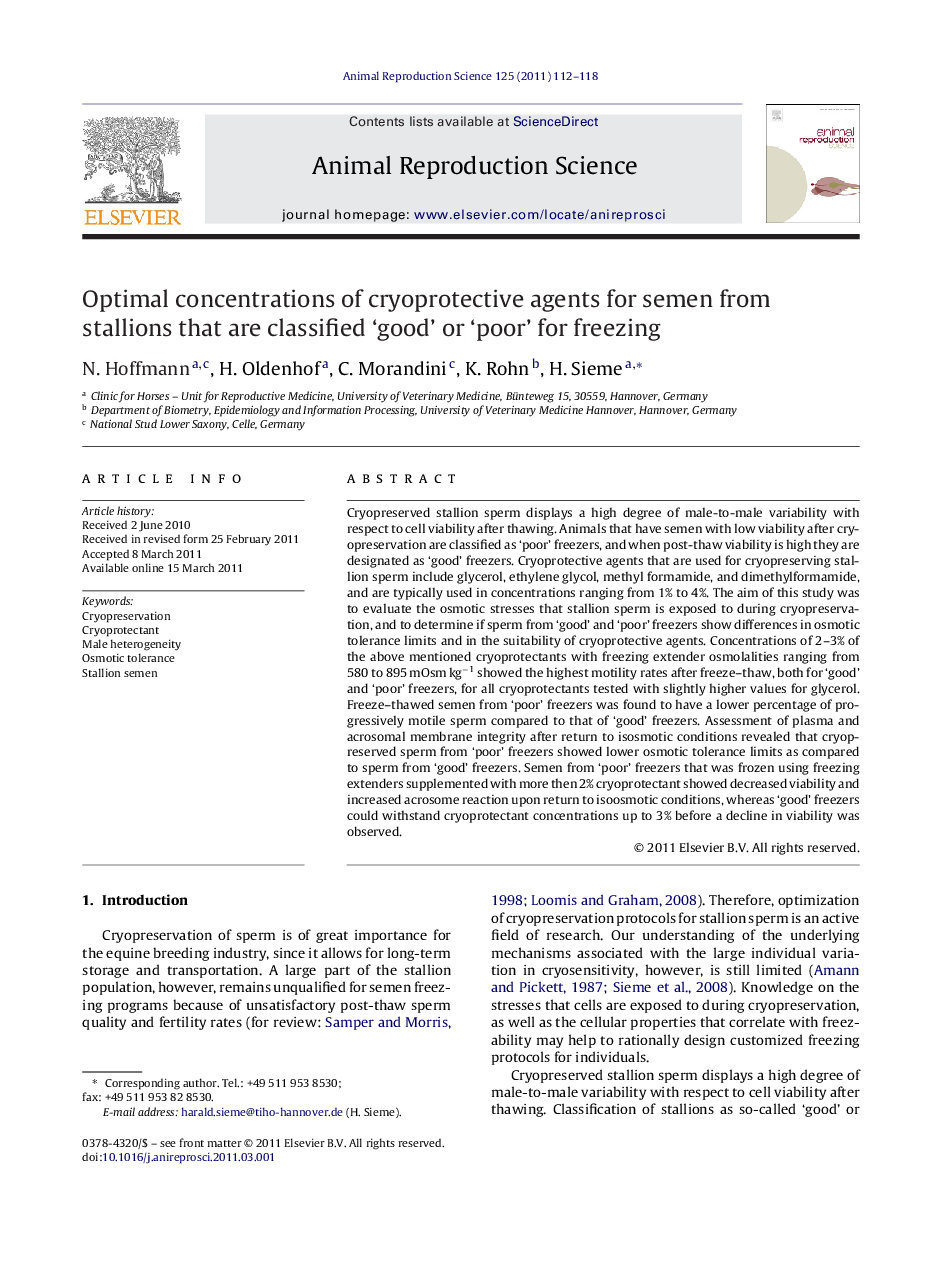| کد مقاله | کد نشریه | سال انتشار | مقاله انگلیسی | نسخه تمام متن |
|---|---|---|---|---|
| 2073444 | 1544773 | 2011 | 7 صفحه PDF | دانلود رایگان |

Cryopreserved stallion sperm displays a high degree of male-to-male variability with respect to cell viability after thawing. Animals that have semen with low viability after cryopreservation are classified as ‘poor’ freezers, and when post-thaw viability is high they are designated as ‘good’ freezers. Cryoprotective agents that are used for cryopreserving stallion sperm include glycerol, ethylene glycol, methyl formamide, and dimethylformamide, and are typically used in concentrations ranging from 1% to 4%. The aim of this study was to evaluate the osmotic stresses that stallion sperm is exposed to during cryopreservation, and to determine if sperm from ‘good’ and ‘poor’ freezers show differences in osmotic tolerance limits and in the suitability of cryoprotective agents. Concentrations of 2–3% of the above mentioned cryoprotectants with freezing extender osmolalities ranging from 580 to 895 mOsm kg−1 showed the highest motility rates after freeze–thaw, both for ‘good’ and ‘poor’ freezers, for all cryoprotectants tested with slightly higher values for glycerol. Freeze–thawed semen from ‘poor’ freezers was found to have a lower percentage of progressively motile sperm compared to that of ‘good’ freezers. Assessment of plasma and acrosomal membrane integrity after return to isosmotic conditions revealed that cryopreserved sperm from ‘poor’ freezers showed lower osmotic tolerance limits as compared to sperm from ‘good’ freezers. Semen from ‘poor’ freezers that was frozen using freezing extenders supplemented with more then 2% cryoprotectant showed decreased viability and increased acrosome reaction upon return to isoosmotic conditions, whereas ‘good’ freezers could withstand cryoprotectant concentrations up to 3% before a decline in viability was observed.
Journal: Animal Reproduction Science - Volume 125, Issues 1–4, May 2011, Pages 112–118